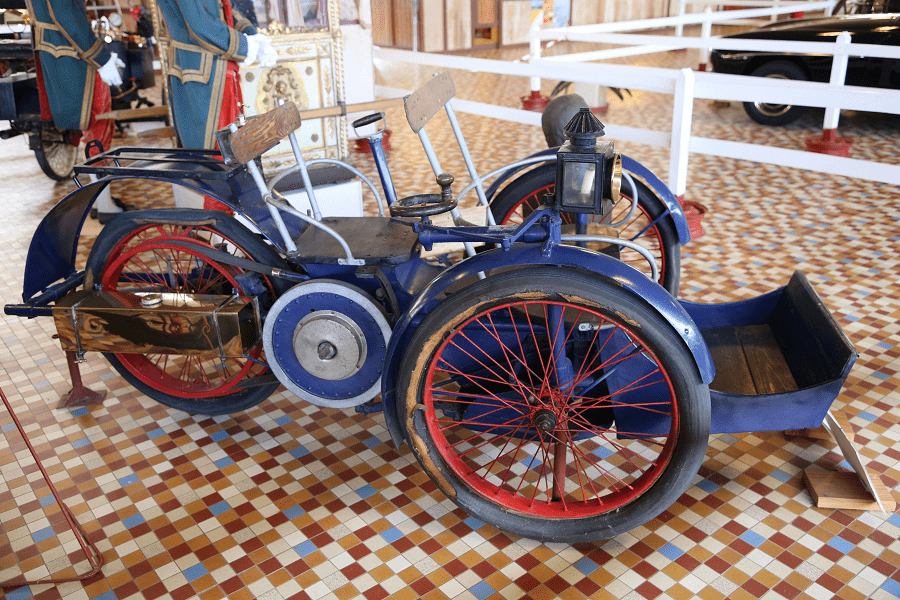Leon Bollee blue tricar with one cylinder (900 cc). Max. speed: 20 km/h. Made in France
Léon Bollée Automobiles was a French company founded by Léon Bollée in Le Mans to build a first vehicle called “Voiturette”.
The Bollée family, all car makers, created three brands:
steam vehicles, Amédée Bollée (father), built between 1873 and 1885.
petrol (gasoline) cars, Amédée Bollée (son), built between 1896 and 1923.
the automobiles of Léon Bollée, between 1895 and 1931.
The first “Voiturette” built by Léon Bollée in 1895 was a three-wheel tandem driven by a single-cylinder 3 HP engine and belt drive. The cars sold well and several hundred were made for Léon Bollée by Hurtu & Diligeon, only the prototypes were made at the Le Mans factory.
The law restricting motor vehicles to four miles per hour on Britain’s public roads was repealed in 1896 and in November of that year a ‘race’ was held in celebration from London to Brighton, which saw a ‘one-two’ for the Bollée brothers in their Bollée cars.
Bollée’s next vehicle appeared in 1899. It was a four-wheel car with independent suspension, whose engine attracted the attention in 1900 of Darracq, which used it in its own models.
In 1903, a new factory was built in Le Mans and here Léon Bollée Automobiles built two four-cylinder models: one of 28 HP and 4.6 litres, and another of 45 HP and eight litres. These cars were equipped in 1907 with a six-cylinder motor and in 1909 with a four-cylinder of 10/14 HP.
The series of 1910 included nine models of which two were of more than 10 litres. By 1911 they were making 600 cars a year.
Léon Bolée died in 1913 but the company continued operations being run by his widow and during World War I, as well as a few cars, made ammunition and machine guns. Car production returned fully in 1919 with the 2612 cc Type H followed in 1922 by a 3918 cc six.











